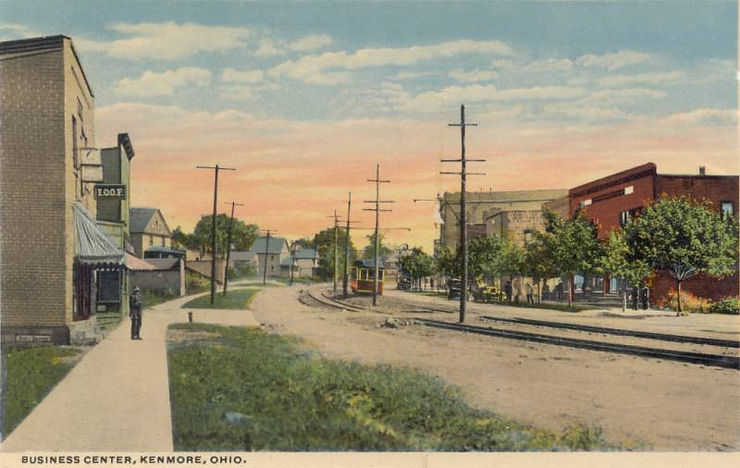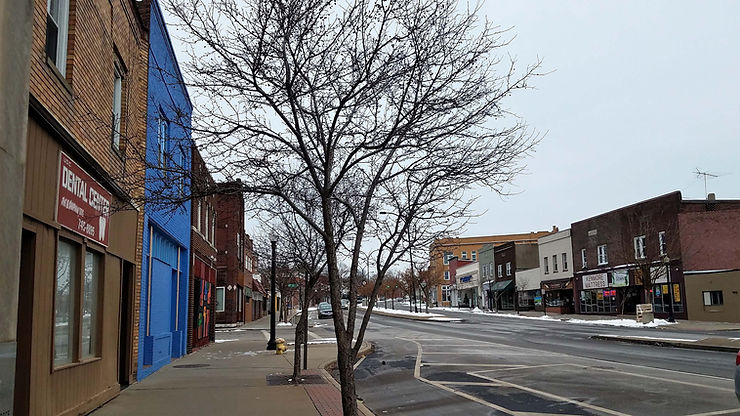
By Doug Livingston Beacon Journal/Ohio.com Posted Mar 26, 2019 at 5:17 PM
Updated Mar 27, 2019 at 8:24 AM
Akron reserves its biggest tax breaks for the biggest projects, like when developers promised to save six downtown buildings or provide $30 million in payroll on Romig Road or when a $200 million investment in East End saved 700 Barberton jobs from leaving Ohio last year.
That’s why Tina Boyes looked so humble when the city council asked Monday how many jobs her project would create.
From a seat in the front row, she raised two fingers no higher than her chin. And with that, a plan to build a little coffee shop on Kenmore Boulevard and a new headquarters for her organization*, got its big tax break, which is equal to 15 percent of the cost of the $200,000 project.
Boyes founded the alliance to lead community change in a neighborhood with buildings so old and rundown that no one would invest in them. She scored another victory Friday when the Ohio State Preservation Advisory Board approved her nomination to put Kenmore Boulevard on the National Register of Historic Places, a designation that carries more than sentimental value with historic tax credits that can make otherwise unfeasible projects possible.
The city named Kenmore Boulevard as one of 10 Great Streets last year, promising facade grants and help with marketing local businesses. There was never any mention of tax breaks, which will give Boyes the last $30,000 she needed for her $200,000 project, the smallest to ever get tax incremental financing from the city.
“This is definitely a tool that we could employ in all of the Great Streets areas,” Planning Director Jason Segedy said in response to At-Large Councilwoman Linda Omobien, who expects to see other neighborhoods get the same the deal that up until Monday had often flowed to major or out-of-town developers.
“I just want to say thank you to the mayor’s economic development staff,” Boyes said Monday as the city council passed the incentive that effectively rebates future property taxes. “We were not expecting this. And the fact that something that is used on large scales for places like what’s going on up on Romig Road [at the old Rolling Acres Mall site] can be applied to a neighborhood business will be catalytic to the boulevard.”
Kickstand Coffee will open this fall at 975 Kenmore Blvd. in a 96-year-old retail building where large wooden radios were sold during the Great Depression and, mostly recently, women went to get their hair done.
KNA was intentional about having a Kenmore resident, Patrick Jackson, lease the space. Jackson’s plan is to partner with an offshoot of First Glance, a youth center in Kenmore, called JOBS (Jump on Board for Success), a separate nonprofit organization that provides culinary training to the moms. KNA will take the rest of the building for its headquarters. *
After surveying residents and hosting multiple public engagement events, Boyes said the neighborhood resoundingly demanded more restaurants and coffee shops for its main drag.
“By purchasing and improving the property, we as the CDC can ensure what ends up there is something the community wants. We can also use it as an opportunity to model the kind of improvement we want to see throughout the district,” Boyes said. “We look at this as a catalyst.”
City council voted Monday on a zero-sum transaction, buying the property then immediately selling it to KNA. State law requires the city to be a one-time owner whenever offering tax incremental financing.
In the end, KNA plans to pay $60,000 for the property and $140,000 on upgrades and renovations. “That’s the sad state of how expensive it is to bring some of these buildings up to the standard that we want,” Deputy Planning Director Adele Dorfner Roth said of repairs that cost more than double the purchase price.
“People are excited about seeing their local downtowns be a place that they can walk to and enjoy,” Roth said. “We’re never going to be building $20 million buildings in those neighborhoods, other than schools and libraries. So these are the kind of projects that need to happen.”
Reach Doug Livingston at dlivingston@thebeaconjournal.com or 330-996-3792.
*KNA is not moving it’s headquarters. It will still be located at 1014 Kenmore Blvd.

